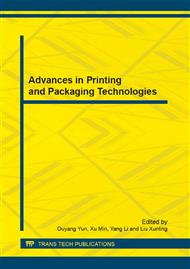p.551
p.557
p.561
p.567
p.572
p.577
p.581
p.586
p.591
A Case Study of Carbon Footprint on Liquor Packaging
Abstract:
The increasing concern on low carbon and environment protection has aroused a broader awareness of the sustainable development issues to be given to the environmental impacts of packaging products through the whole life cycle. The research of carbon footprint takes the high lights among these studies. The calculation of carbon emissions on commodities has shown many advantages on estimation of global greenhouse gas emissions. In this work, glass bottle liquor packaging was selected as the researching object, its equivalent carbon emissions were investigated by hybrid life cycle method. Through the carbon emissions research of the processes during the whole life cycle including raw materials’ production, packaging process, transportation, consumption and recycling, the carbon footprint on liquor packaging was calculated. The results indicated that the transportation and production of glass bottle contribute the most parts of total carbon emissions, which provides a case support for energy conservation and the development of green packaging.
Info:
Periodical:
Pages:
577-580
Citation:
Online since:
December 2012
Authors:
Keywords:
Price:
Сopyright:
© 2013 Trans Tech Publications Ltd. All Rights Reserved
Share:
Citation:


